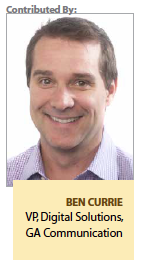 Our involvement in social media requires thoughtful planning; predetermined and approved frameworks; rules of engagement, content workflows, and efficient approval workflows; monitoring technologies; legal guidelines; and integrated QA processes.
Our involvement in social media requires thoughtful planning; predetermined and approved frameworks; rules of engagement, content workflows, and efficient approval workflows; monitoring technologies; legal guidelines; and integrated QA processes.
My job, probably yours too, is to connect HCPs and patients with health solutions. It might be a new innovation in insulin delivery for PWT2D, or a new treatment option for a rare immune deficiency disease, or a better method of managing pain for late-stage cancer patients. Regardless of the therapeutic area, brand, or device the challenge remains the same: we must make a meaningful connection between the person in need and a helpful solution.
The Optimal Tool for Making Connections
Social media is proving to be the optimal tool for making these connections. And we are excited with the opportunity it brings to us and how it may propel the entire health experience forward. We are graduating from a time in which our carefully crafted and thoughtful messages are handed out in mass, at random, or at a pre-determined time without context. Social gives us (the connectors) the ability to discuss our solutions in the most appropriate manner and time with the patient (the connected) because our interaction can be triggered and customized by the patient’s actions.
This capability means our voice is less like a random shout across the room, and more like an appropriate one–to–one introduction. The evidence is in the creative brainstorming sessions where we once often asked “does it get attention?" or “does it interrupt?" But now we are starting to hear the more respectful “does it flow?," “does it continue the conversation?," “does it engage?," and “is it meaningful?"
We no longer have to be loud, abrupt, and rude because we now have better context. It is inherently weaved into the fabric of social media. There is little surprise why our message or voice is present because it can be closely tied to and triggered from the patient’s action, behaviors, or self-profiling.
We don’t have to advertise anymore. Instead, we can speak because we know more about the person we are engaging. This more eloquent channel provides feedback and deeper understanding so that our voice no longer just loudly repeats itself, but grows in its understanding and relevance to its audience.
There is a long way to go but we see a future in which the majority of digital outreach includes a social media component. The hurdles to this future are sizable. Our industry can’t always engage in such a fluid manner. We can’t just try things out. There is nothing flippant about our industry or our responsibilities. Our involvement in social media requires thoughtful planning; predetermined and approved frameworks; rules of engagement, content workflows, and efficient approval workflows; monitoring technologies; legal guidelines; and integrated QA processes.
These more eloquent options require a deeper understanding of the technology and channels before we can venture to utilize them. We must understand the full range of ramifications of every like, comment, post, and share. We must understand where we can appropriately engage and where we can not.
We need to consider:
1. How customer service issues and adverse events will be identified and flow properly and efficiently through the organization?
2. How meta data are used and how med/reg/legal review will review these?
3. If and how users can edit our messages?
4. How will content morph and move from one channel to the next organically without our involvement or approval?
Creating Valuable Engagements ?For Patients
We believe the effort is worth it because the engagements are more valuable for patients as evidenced by the flood of health-related content being created and consumed.
You know, you’ve searched YouTube. For nearly any chronic disease or condition there is the opportunity to view content created by medical professionals, life-sciences organizations, patients, and their circle of care.
In this single channel lives a variety of lenses, opinions, insights, emotions, and needs. But the value and beauty of this content is more than its variety or the ease with which it is created, consumed, and shared.
The value and beauty is in that ability of social media to deliver useful and meaningful content at the moment patients and caregivers are most receptive to it — making our work of connecting them to solutions more natural, more effective, and more meaningful.
There is a long way to go but we see a future in which the majority of digital outreach includes a social media component. (PV)
GA Communication Group is a leading independent marketing communications company located in Chicago and Los Angeles. For more information, visit gacommunication.com.


















